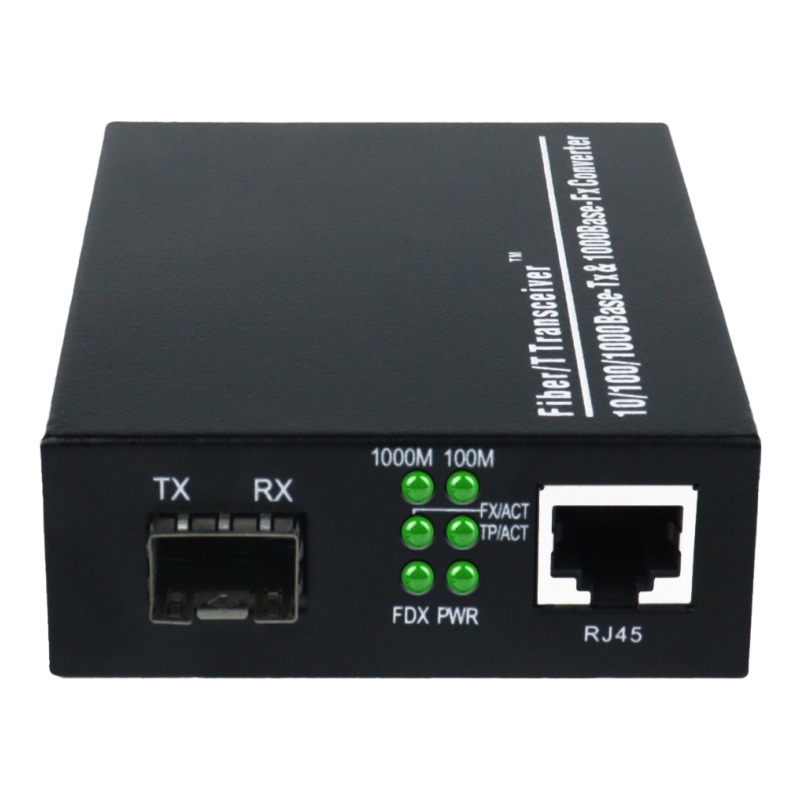8 Essential Tips About Fiber Optic Media Converter
Fiber optic media converters are highly cost-effective and flexible devices used predominantly to convert electrical signals from twisted-pair cables into optical signals.
Their use is critical in network environments where Ethernet copper cables can't cover the necessary distances and where fiber optic cabling is required to extend the reach. They also play a pivotal role in connecting the last mile of fiber to metropolitan area networks and beyond.
Below are eight key insights to enhance your understanding of Fiber Optic Media Converters.
1. Understanding the Indicator Lights on a Fiber Optic Media Converter
Fiber optic media converters typically feature six indicator lights. Each light has a specific meaning, and it's not always necessary for all to be illuminated for the device to function properly.
- PWR: When lit, this indicates the DC5V power supply is working correctly.
- FDX: A lit light indicates that the fiber is transmitting data in full-duplex mode.
- FX 100: This light, when illuminated, signifies that the fiber transmission rate is at 100Mbps.
- TX 100: If this light is on, it indicates a 100Mbps transmission rate over twisted-pair cabling; if off, the rate is 10Mbps.
- FX Link/Act: A steady light means a proper fiber link connection; blinking indicates data transmission over fiber.
- TX Link/Act: A steady light shows a stable twisted-pair link connection; blinking signals data transmission at 10/100M.

2. What Type of Cable Should Connect the Media Converter's RJ45 Port to Other Devices?
When connecting the converter's RJ45 port to a computer's network card (DTE – Data Terminal Equipment), use a crossover twisted-pair cable. When connecting to a HUB or SWITCH (DCE – Data Communication Equipment), use a straight-through cable.
3. What is the Tolerable Operating Temperature Range for Media Converters?
Fiber optic modules are quite sensitive to temperature changes. They contain automatic gain circuits, but performance can degrade if the temperature goes beyond certain limits, potentially causing packet loss or link failure. Typically, fiber optic modules can operate up to 70°C.
4. Do Fiber Optic Media Converters Support Full-Duplex and Half-Duplex?
Some chips on the market only function in full-duplex environments and cannot support half-duplex.
This limitation can cause significant conflicts and packet loss if connected to other brands of switches or hubs operating in half-duplex mode.
5. Have You Tested the Compatibility with Other Fiber Optic Media Converters?
With an increasing variety of fiber optic media converters on the market, it's important to test for compatibility between different brands to avoid issues such as packet loss, latency, or erratic transmission speeds.
6. What is the Functionality of Link Alarm on Media Converters?
Media converters with link alarm functionality (link loss) can automatically feed back to the electrical port (indicating through the corresponding LED) when a fiber link goes down, allowing for immediate notification within managed switch software if present.
7. How to Assess the Optical Power of a Fiber Optic Media Converter
You can measure the normal light output power of a fiber optic media converter or module using an optical power meter:
- Multimode 2Km: between -10db and -18db
- Single-mode 20Km: between -8db and -15db
- Single-mode 60Km: between -5db and -12db
If the media converter's light output power is between -30db and -45db, it's likely that the device is malfunctioning.
8. What About Compatibility with External Protocols?
Like 10/100M switches, 10/100M fiber optic media converters have limitations on frame size, typically not exceeding 1522B or 1536B.
If a connected switch at the local end supports special protocols (e.g., Cisco's ISL) that increase the packet overhead (ISL overhead is 30Bytes), it may exceed the media converter's frame length limit and lead to dropped packets.
In such cases, adjusting the MTU of the terminal equipment may be necessary.
Choosing a reliable supplier for your fiber optic media converters is crucial for optimal performance. If you require professional-grade fiber optic media converter equipment, contact Fibeye for solutions.

